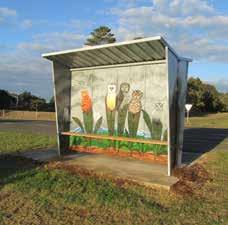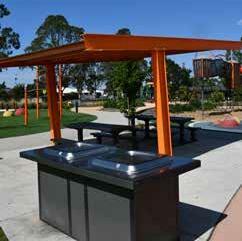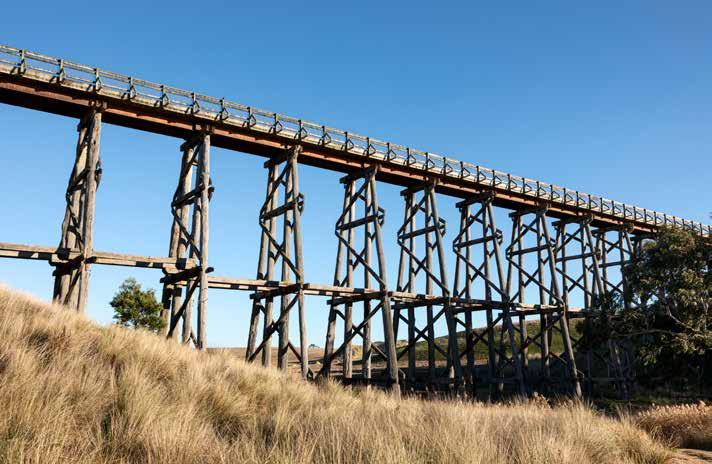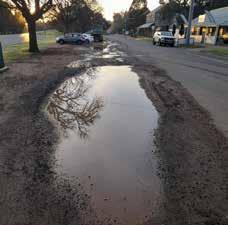
10 minute read
8. Funding for Long-Term Sustainability
8 Funding for Long-Term
Sustainability
Advertisement
The main theme underpinning the Asset Plan 2022-2032 and broader asset management planning principles is ensuring responsible stewardship of Council assets to meet the needs of tomorrow’s community.
This acknowledges the many and varied factors that influence the delivery of the community’s infrastructure. Some of these challenges are legacy issues, others are simply the demands of a progressive society that is constantly seeking to improve. Either way, Council is responsible for ensuring that its infrastructure contributes to achieving its long term aspirations and supports a healthy, wellconnected and prosperous community.
8.1 Asset Investment Strategy
Looking ahead to the next 10 years, Council’s approach is to be prudent in its investment decisions using a holistic lifecycle approach to asset management. This means that Council will aim to plan its assets so that they will continue to support quality living, economic development and the environmental integrity of Golden Plains Shire in the long term. Inverleigh Main Street Drainage Before and After

In planning and providing infrastructure requirements in the next 10 years, Council will aim to:
Optimise asset life through timely and effective maintenance
Continue to replace ageing infrastructure
Maintain current levels of service
Manage the impacts of growth and land use change
Comply with legislative requirements Provide long-term affordable services
There is no one-size-fits-all care programme for all assets. Council will continue to use a mix of approaches, including preventive maintenance, reactive maintenance, run-to-failure (breakdown maintenance), predictive maintenance and risk-based maintenance for critical assets. Through a robust asset renewal programme, Council will progressively replace assets as they reach the end of their useful life. The rate of asset renewal is intended to maintain the overall condition of the asset system at a standard that reflects its criticality and age profile and ensures that the community’s investment in infrastructure is sustained.
Using a holistic lifecycle approach to asset management, Council’s decisions will be data driven to maximise the performance and life of its assets without diminishing the net level of service over the long term. Our strategic plans will provide guidance on future asset needs by identifying location and scale of growth. Contributions from development will be taken to fund necessary infrastructure so that growth pays for growth, and costs are not unfairly borne by established communities. Council acknowledges and will action legislated standards in infrastructure planning and development. Council’s financial strategy will continue to reflect the balancing of ratepayer affordability against community needs and aspirations.
Rate-capping constrains Council’s ability to control revenue. In the rate-capped environment, greater emphasis is required on the maintenance and renewal of existing assets as opposed to the improvements or development of new assets. Council’s Revenue and Rating Plan addresses its reliance on rate revenue and provides options to actively reduce that reliance to ensure ongoing financial sustainability.
Council Rate Cap
The Minister for Local Government sets local council rate caps. The cap is the maximum amount Council can increase its general rates and municipal charges within a financial year. The rate cap set for 2022/23 is 1.75%.
8.1.1 Spending Categories
For the purposes of the Asset Plan 2022-2032, spending on Council infrastructure is categorised as follows:
Expenditure Category
Recurrent
Renewal Activity
Maintenance
Operations
Renewal
Upgrade Description
Ongoing work required to keep an asset performing at the required level of service. Recurrent expenditure that is continuously required to provide a service. Returns the service potential or the life of the asset up to that which it had originally. Enhancements to an existing asset to provide a higher level of service.
Growth Expansion
New
Extends or expands an existing asset at the same standard as is currently enjoyed by residents, to a new group of users. Creates a new asset that provides a service that does not currently exist.
Table 4 - Expenditure Categories
Classifying Council’s expenditure in this way helps to plan its budgets and track how Council spends on its assets and services.
8.1.2 Investment Evaluation
Council follows an investment philosophy that: • Ensures that capital investment for infrastructure assets aids in the achievement of its strategic objectives. • Aids the development of a service needs directed long-term capital works program, to better inform its
Long-Term Financial Plan 2021-22-2031/32. • Ensures capital investment delivers best value. • Ensures that capital investment is financially sustainable, and in accordance with asset management principles for the whole life cycle costs of its infrastructure.
• Builds a robust capital infrastructure asset investment system, that is impartial and priority-based for allocating its resources. • Places an emphasis on allocating funding for renewing assets. Funding for upgrades, extensions and new projects will only be considered after renewal requirements are identified and considered. • Enhances transparency and public confidence in its capital investment decision-making process. Council’s approach provides a means of evaluating and appraising proposed infrastructure investments, as well as setting priorities within the context of its long-term asset and service needs. It is important that investment decisions on our infrastructure are based on the ability to fund the upfront capital costs and also include allowances for the ongoing operational, maintenance and future replacement costs.
8.2 Financial Summary
Lifecycle costs are essentially how much money Council will need to spend on an asset over the course of its useful life. This includes costs from the time an asset is acquired or built, while it is in use, including maintenance, to the time it is either disposed of or replaced. The cost to buy, use and maintain assets adds up and future costs needs to be forecast over the long term so that Council can plan to budget for this expenditure in coming years. There are a number of ways Council determines when and how much it needs to allocate to fund the lifecycle costs of its assets.
Recurrent
Renewal
Growth
Operating costs (i.e., asset maintenance and care) are determined according to Council’s levels of service and frequency of its various activities (e.g. mowing, street sweeping, etc.). Renewal costs are determined using Council’s analysis tools that predict when an asset needs to be replaced based on its current condition and an understanding of how it ages and deteriorates over time. The priority and amount of funding Council needs to allocate to improving its assets are guided by Council’s various strategies, plans and understanding of community expectations. The selection of discretionary projects such as these must pass through Council’s investment evaluation processes before they are selected for inclusion on its capital works program.
Figure 5 shows Council’s planned expenditure across its infrastructure assets included in the Asset Plan 2022-2032 over the next 10 years. The line in the graph represents the anticipated budget needs required to achieve lowest lifecycle costs, the bars indicate the funding that is forecast to be available from Council’s Long-Term Financial Plan 2021/22-2031/32. The gap between these informs the discussion on achieving the balance between services, costs and risk to achieve best value outcomes.
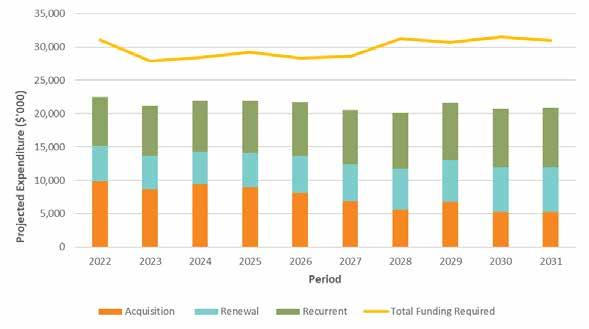
Figure 5 - Projected Total Asset Expenditure
This is further summarised in Table 6, which shows the total planned expenditure related to renewal, growth and recurrent activities over the next 10 years for each asset class.
Asset Class
Renewal ($’000) Acquisition ($’000) Recurrent ($’000) Total ($’000)
Road and Car Parks
24,186 34,390 32,308 90,885
Buildings 2,575 22,772 17,336 42,684 Bridges 21,582 1,250 2,254 25,086 Footpaths 1,550 2,500 891 4,941 Drainage 3,000 1,330 5,719 10,049
Open
Space
4,150 12,606 22,794 39,550
Total 57,043 74,849 81,303 213,195 Table 6 - Forecast Expenditure by Asset Class
Council plans to spend an estimated total of $213.2 million on its assets over the 10 years. Of this:
• Around 27% ($57 million) is renewal expenditure for replacement of assets that are reaching the end of their lives. • Around 35% ($74.9 million) relates to expenditure to meet growth or additional future demand.
• Around 38% ($81.3 million) relates to caring for
Council assets through ongoing maintenance and other activities to make sure that they are safe and functional.
The spending of Council on its assets represents a significant investment made on behalf of the community and is fundamental in enabling Council to meet everchanging demands and to safeguard future use of its infrastructure.
Council has made every effort to accurately determine the financial outlays necessary to renew, improve and care for its infrastructure for the next 10 years. The outlays made in the Asset Plan 2022-2032 have been determined based on the affordability assessments made in Council’s Long-Term Financial Plan 2021/22-2031/32 and represents the investment that is required to maintain its existing levels of service. The Asset Plan 2022-2032 outlines a fuller picture of the future demand on Council’s assets so that it can make informed decisions around prioritisation of its finite funding resources. Actual funding will be guided by the Long-Term Financial Plan 2021/22-2031/32 and determined in its Annual Budget. Projected funding allocations may change depending on shifting priorities, Council’s need to react to immediate or emerging issues, or as grant opportunities become available. The Asset Plan 2022-2032 will therefore be agile and responsive to make sure it is reflective of Council’s plans and is closely integrated with its LongTerm Financial Plan 2021/22-2031/32.
Appendix A provides a detailed breakdown of the projected expenditure requirements for each infrastructure asset class over the next 10 years.
8.2.1 Managing the Funding Gap
Based on projections of the future lifecycle costs of Council’s assets over the next 10 years, it needs to spend a total of $297.9 million to maintain its planned levels of service. When compared with how much Council is budgeting to spend in its Long-Term Financial Plan 2021/22-2031/32 ($213.2 million), Council is faced with a total funding gap of $84.7 million. This shortfall is largely as a direct result of the projected renewal gap across all of its infrastructure assets. Council also acknowledges that it has areas to improve its long-term infrastructure planning and integrating the financial outcomes of this with Council’s Long-Term Financial Plan 2021/22-2031/32.
If Council does not appropriately manage this gap, Council could be faced with risks of:
• Continued deterioration of its assets. • Poor performing assets. • Asset failure.
• A decline in public confidence and community satisfaction. • Compromised public safety and associated liability. • Loss of financial and economic viability.
Asset Renewal Gap
In simple terms, the asset renewal gap is the difference between the current level of actual expenditure on renewing existing assets and the level of funding necessary to replace its assets when they need to be.
The imperative is to ensure that Council’s assets are safe, fit for purpose and meet the needs of the community. Council will strive to responsibly fund the renewal of its assets in the future. This is so it can minimise the impact to the community of the costs of unsustainable asset provision by proactively renewing and maintaining assets. Council has many options available to manage the asset renewal gap:
• Improving the quality of information – Knowing what condition assets are in, how long they last for, and how they are used will give Council greater confidence in asset renewal projections. • Clearly defining levels of service in consultation with the community will guide when assets need to be replaced enable discussion about long-term affordability.
• Improving efficiency is part of Council’s ongoing commitment to continuous innovation. Operational efficiencies with how Council manage its assets, including day-to-day maintenance, construction, replacement and longer-term planning can reduce the overall costs. • Continue its advocacy efforts to attract support through government grants to increase the available sources of funding and reduce the cost burden. • Adapting or consolidating existing assets to maximise multiuse potential could result in the rationalisation of unnecessary assets. • Forming or strengthening alliances with strategic partners to find opportunities for finding non-asset solutions to the delivery of services. This can reduce costs.
• Reviewing the distribution of Council’s own available funding so that it can prioritise spending towards the replacement of assets.
Images from top to bottom: Painted Bus Shelters, Scarsdale Bannockburn Heart tables and BBQ
